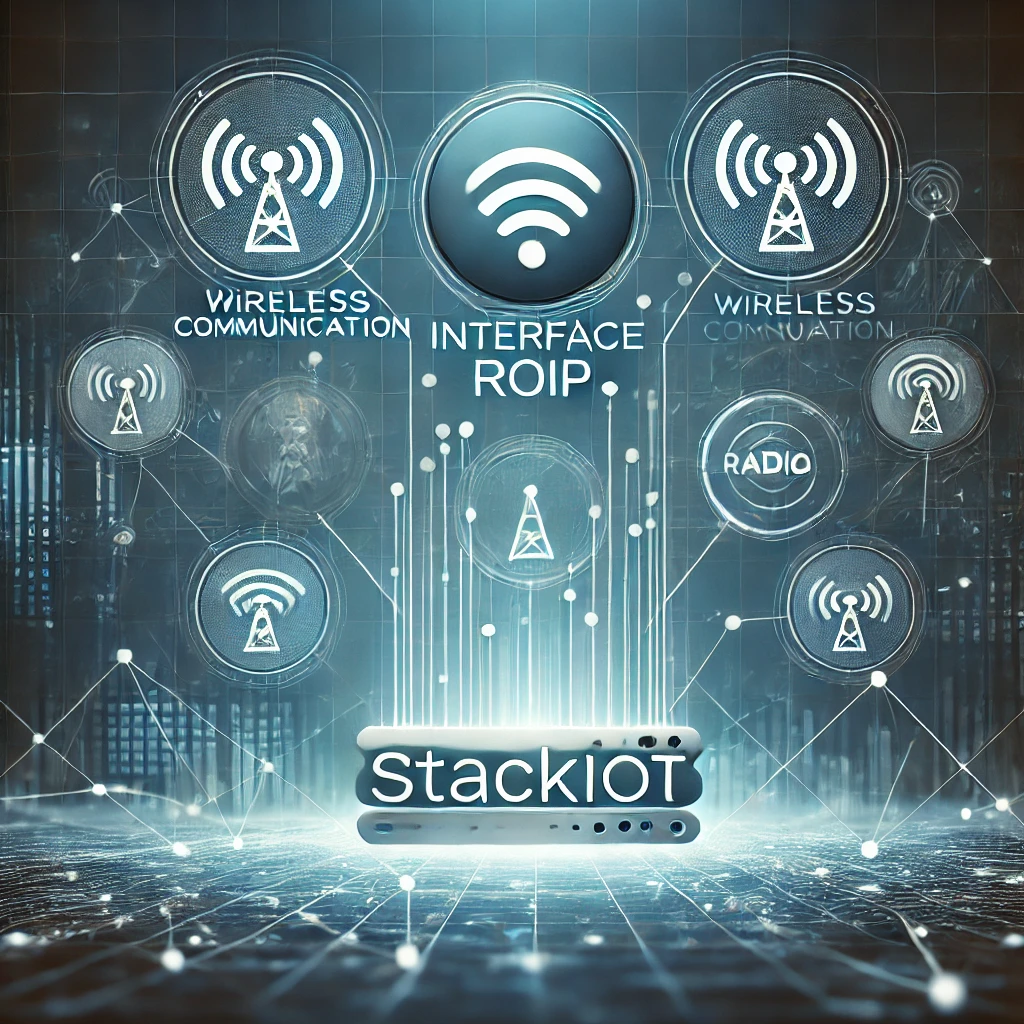Today communication networks must not only have connections with radios. Smartphones, tables, laptops, and command consoles are becoming more and more important to field operators, dispatchers, and emergency responders. However, the conventional Land Mobile Radio (LMR) systems albeit rugged and resilient are usually isolated. And that is where Radio over IP (RoIP) technology comes in.
RoIP, as the digital gateway, joins traditional radios with IP-based systems, smart phones and advanced push-to-talk over cellular (PoC) systems. We will also separate in this blog what RoIP is, how a RoIP gateway works, the benefits of it, and how it facilitates actual interoperability in mixed communication settings.
What Is Radio over IP (RoIP)?
Radio over IP is very similar in principle to Voice over IP (VoIP) except that rather than transmission of voice on the telephone, two-way radio transmissions are transported across IP networks. It translates audio and control signals in radios into IP packets that traverse either LAN, WAN or the internet.
In simpler terms:
RoIP allows radio systems to interact over distances over IP networks not only radio frequencies. This implies that the two radios can be on different frequencies or different technologies (VHF, UHF, P25, TETRA, DMR, etc.), but can communicate if both sides are both linked through RoIP.
Typical Architecture
| Component | Function |
| Two-way Radio / Repeater | Traditional RF communication device |
| RoIP Gateway | Converts audio & control signals into IP packets |
| IP Network (LAN / WAN / Internet) | Carries communication between gateways or servers |
| Dispatcher Console / PTT App / Control Station | Interfaces used by operators, smartphones, or desktops |
Basic Workflow
- In a handheld radio, a user presses PTT button.
- The radio receives the signal and sends it into RoIP gateway.
- The gateway converts and wraps this audio in IP packets.
- These packets are sent to an IP network to a different gateway or console.
- On the other end, the gateway decodes packets and reinstates the packets in an analog or digital radio signal-or audio that plays on a smartphone, PC, or console.
- The process occurs almost immediately, enabling people using radios, smart phones and computers to interact with one another as they are in the same network.
The main characteristics of a RoIP gateway
- Translation of protocols: Light protocol translator multipurpose to radio types and PTT systems.
- Group & Individual Calls: Allows versatile communication frameworks.
- Network Flexibility: Supports LAN, WAN, VPN and even satellite.
- Sound Compression and Coding: Assures the effective and safe transfer of voice.
- Scalability: You can connect additional gateways to expand the coverage or to connect more systems.
- Redundancy & Failover: Provides reliability even in disruption of networks.
The importance of RoIP Interoperability
One of the largest pain points in the current communication networks, particularly with regard to public safety, defense, logistics and utilities, is interoperability. Various departments have varying radio brands or frequencies.
The systems cannot communicate with one another without RoIP; with it, they can.
Key Benefits
- Unified Communication: Makes people using LMR, LTE, 5G, Wi-Fi and satellite a single network.
- Geographical Expansion: Increase radio range past the line-of-sight-thru cities or nations.
- Cost Effectiveness: There is no requirement of expensive new towers or frequency license.
- Flexibility of the devices: All the devices, including smartphones, dispatch consoles, and radios, are interoperable.
- Future-Proofing: Grants the gradual transition of old radio systems to IP or cellular.
RoIP vs Traditional Radio Networks
| Feature | Traditional LMR | Radio over IP (RoIP) |
| Coverage | Limited by RF range | Global (via IP) |
| Scalability | Requires new towers | Add gateways easily |
| Interoperability | Same frequency only | Any radio type, any network |
| Cost | High infrastructure | Lower CapEx & OpEx |
| Flexibility | Hardware-bound | Software-configurable |
| Integration with PTT apps | Not possible | Seamless |
| Redundancy | Limited | Multi-path, IP redundancy |
Real-World Use Cases
- Emergency Response and Public Safety.
RoIP can be used to interface several radio systems among police, fire, and EMS departments in event of an emergency. Field personnel can interact with dispatch centers either through radio or LTE devices or dispatch console in real time.
- Transportation & Logistics
Fleet operators can use the push-to-talk mobile applications to push and talk to the drivers via traditional radios. RoIP keeps all people in touch with each other regionally and internationally.
- Utilities & Energy
The constant voice communication between power plants and field technicians is possible even under the circumstances when they use different radio frequencies or IP-based networks.
- Construction & Mining
Radios at remote sites can be connected to headquarters through satellite IP networks that reach a long distance way beyond the RF range.
- Defense & Security
RoIP gateways can be used to coordinate tactical teams operating on other communication standards (HF, UHF, LTE).
How RoIP Enables Smartphone and Console Connectivity
The current RoIP systems are not limited to radio to radio connections, but also with push to talk applications and dispatch consoles, allowing combined networks.
- Smartphones: PTT can also be used over cellular applications, where individuals can join radio groups using RoIP gateways and talk directly to radio users.
- Consoles: The dispatchers will be able to manage talk groups, record communication, and monitor users via an IP-based dashboard.
- Cloud Integration: There are systems that have cloud-hosted RoIP servers and can be used in on-premise hardware-free deployments.
This degree of interoperability converts the systems that are isolated in communication into unified networks.
Security and Reliability Issues
Since RoIP is based on IP networks, the protection of data and availability is essential.
Key safeguards include:
- End-to-End Encryption (AES 256-bit)
- Role-based Access & User Authentication.
- Personal VPN Tunnels of Remote Connections.
- Backup Systems or Back-up Servers.
- Traffic Prioritization and QoS to decrease voice jitter or packet loss.
RoIP can be made available and reliable like mission-critical radio systems with proper design.
Best Practices for Deploying a RoIP System
- Determine the interoperability requirements and what is in place in radio.
- Choose multi-protocol RoIP gateway which supports your radio brands (e.g., Motorola, Hytera, Kenwood etc.).
- Connect remotely using secure IP networks or VPNs.
- Bring on board PTT over Cellular interoperability on smart phones.
- Introduce a centralized management and monitoring of real-time health of the system.
- High availability Plan redundancy (more than one gateway or link).
- Trainees and dispatchers on cross platform communication processes.
Market Outlook
The RoIP market is currently experiencing a stable growth worldwide, as a result of the digital transformation and the need to use mixed communications. The adoption of RoIP is expected to continue to rise in a CAGR of more than 10 percent to 2030, and there is high consideration of this technology in public safety, transport and industrial markets.
As the 5G and Private LTE networks continue to expand, RoIP is becoming the ideal interoperability layer to enable traditional radios to attach to IP ecosystems.
Conclusion
RoIP has turned into the necessary connection between the ancient and the new communication worlds- connecting analog radios, digital system, smart phones, and IP console into a single working network. With the implementation of powerful Radio over IP Gateways, organizations are able to revise their communication and even increase the range of their communication and make sure that all voices, be it that of a handheld radio or even a smartphone are heard immediately and clearly.
In the case where you are considering next-generation, RoIP integrated communications, consider StackIOT an IoT and communication technology leader that assists businesses in creating interoperable and future-proof systems.
FAQs
1. What is RoIP?
RoIP stands for Radio over IP. It enables the use of two-way radio across IP networks so that various types of radios can be used with the IP devices.
2. What does a RoIP gateway do?
Analog or digital radio signals Via a RoIP gateway, radios can communicate over LAN/WAN or the internet.
3. Can RoIP connect radios with smart phones?
Yes. By linking RoIP gateways to PTT over cellular apps, smart phones can talk directly with radio users as part of the same talk group.
4. Is RoIP secure?
When implemented with encryption, VPNs, and authentication, RoIP can be as secure as dedicated radio networks—often even more so.
5. How is RoIP different from VoIP?
While both use IP to transmit audio, VoIP is for phone calls, whereas RoIP is optimized for push-to-talk and radio control signaling.




